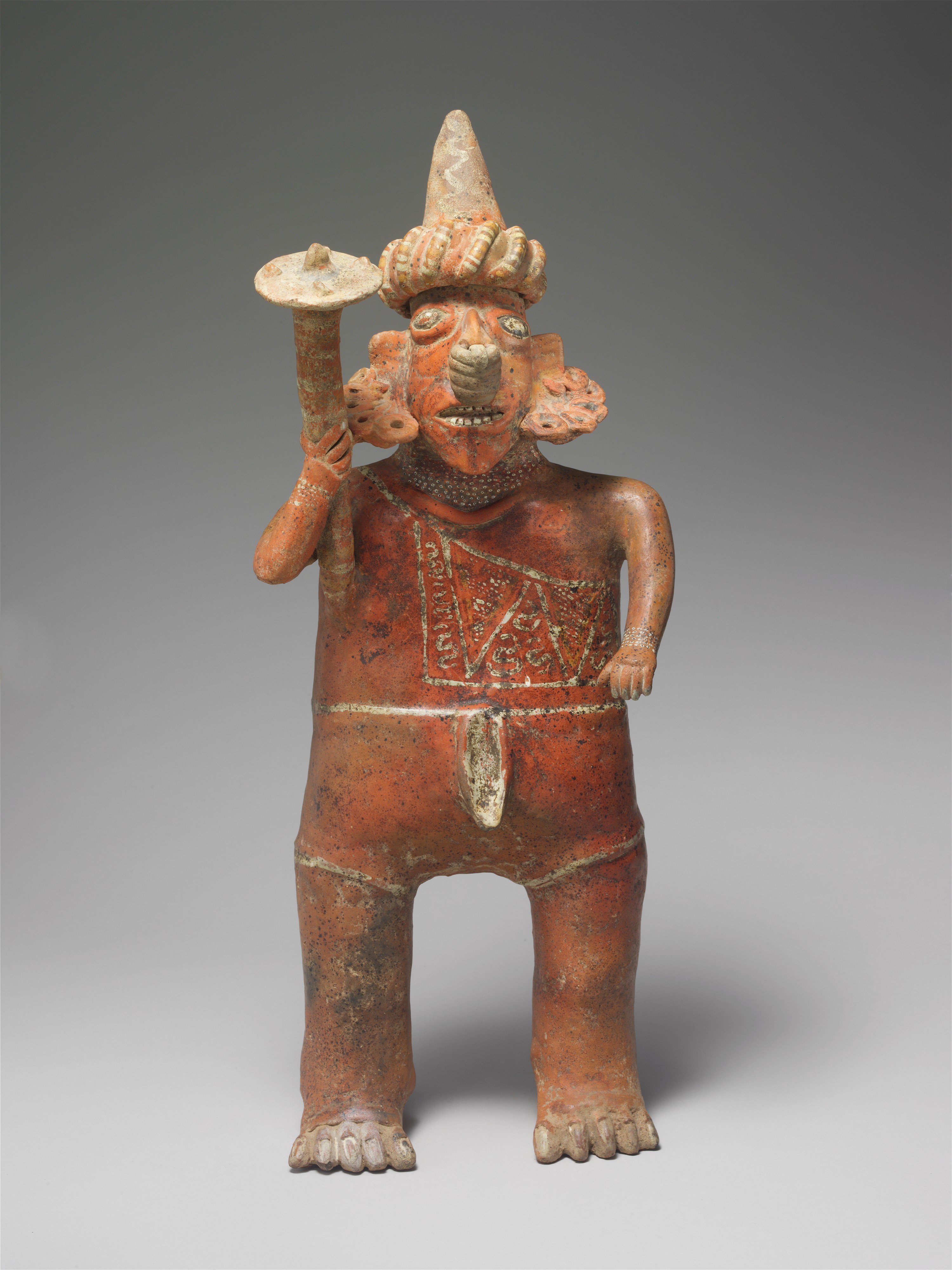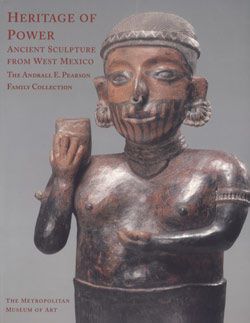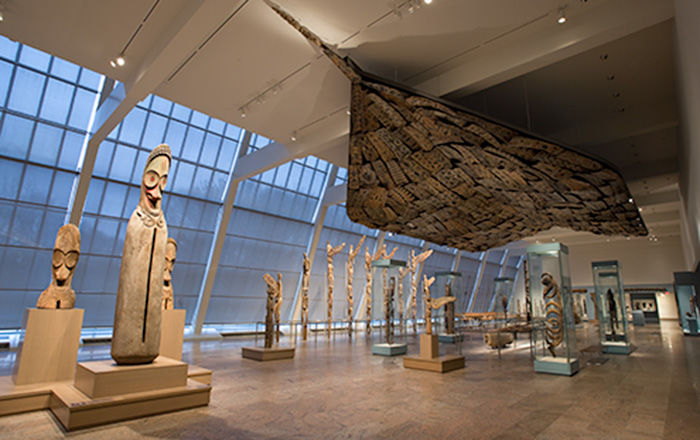Male figure
Not on view
This hollow ceramic sculpture is one half of a male/female pair, typical of many discovered in the shaft tombs (tumbas de tiro) of West Mexico (for his female counterpart see MMA 2005.255.2). The artist has employed various techniques to depict the figure’s attire and ornaments. Slabs and balls of clay represent his multiple ear and nose rings, while his wrist bands and necklace of woven mesh have been painted on. His lower garment is also painted on, although its tie is formed from clay. The figure’s thin arms and sharply projecting chin and nose are typical of the Ixtlán del Rio style, as are his oversized feet, that serve to increase the sculpture’s stability.
The figure’s upper garment hangs from a thin thread over his right shoulder. His tall, peaked cap is woven in a geometric design and banded with rolls of clay representing cloth twisted to form a diagonal pattern. Few textiles from ancient Mesoamerica have survived, but artworks such as this one provide valuable insights into their use and appearance. West Mexico’s weavers utilized various structural techniques on and off the loom to create designs that reflect the geometry of the weaving process itself. Cloth, colored with dyes sourced from plants, insects, and minerals was manipulated in myriad ways to create items of dress and ornament. As seen on this figure, textiles were wrapped around the lower body to form loincloths, and narrow, twisted bands of cloth were wound and tied to secure head coverings.
While created as one of a male/female pair, matched in size and body position and wearing complementary clothing, jewelry, and body ornamentation, this male figure’s gender is nonetheless clearly indicated. He wears a loincloth, and holds what may be a staff or weapon, likely a sign of his position within the community. Such pairs may represent ancestors, or the persons buried in the tombs where they were placed. They may also stand in for the primordial couple, the origin of life itself. As such, they suggest a broader cosmic view, rooted in duality and the balance of opposites.
Patricia J. Sarro, 2024
Further Reading
Baumbach, Otto Schöndube. EL HORIZONTE CLASICO: Las Culturas de Jalisco, Colima y Nayarit / THE CLASSIC HORIZON: The Cultures of Colima, Jalisco, and Nayarit. Artes de México, no. 119 (1969): 23–68. http://www.jstor.org/stable/24315718.
Butterwick, Kristi. Heritage of Power: Ancient Sculpture from West Mexico: The Andrall E. Pearson Family Collection. New York, New Haven, London: The Metropolitan Museum of Art, 2004, pp. 85–86, no. 38.
Cabrero G., Ma. Teresa and Carlos López Cruz. Las Tumbas de tiro de El Piñon, En El Cañon de Bolaños, Jalisco, Mexico. Latin American Antiquity 9, no. 4 (1998): 328–41. https://doi.org/10.2307/3537031.
Gallagher, Jacki. Companions of the Dead. Ceramic Tomb Sculpture from Ancient West Mexico. Los Angeles: University of California. 1983.
Los Angeles County Museum of Art. Sculpture of Ancient West Mexico, Nayarit, Jalisco, Colima. Los Angeles: The Los Angeles County Museum of Art, 1989.
Pickering, Robert B., and Ephraim Cuevas. The Ancient Ceramics of West Mexico: Corpse-Eating Insects and Mineral Stains Help a Forensic Anthropologist and a Chemist Determine the Authenticity of 2,000-Year-Old Figurines. American Scientist 91, no. 3 (2003): 242–49. http://www.jstor.org/stable/27858214.
Pickering, Robert B. and Cheryl Smallwood-Roberts. West Mexico: ritual and identity. Tulsa: Gilcrease Museum, 2016
Townsend, Richard, ed. Ancient West Mexico: Art and Archaeology of the Unknown Past. Chicago: Art Institute of Chicago, 1998.
Zepeda, Gabriela, Nayarit prehispánico. In Introducción a la arqueología del Occidente de México. Mexico City: Instituto Nacional de Antropología e Historia: 2004, pp. 371-396.
This image cannot be enlarged, viewed at full screen, or downloaded.
This artwork is meant to be viewed from right to left. Scroll left to view more.




